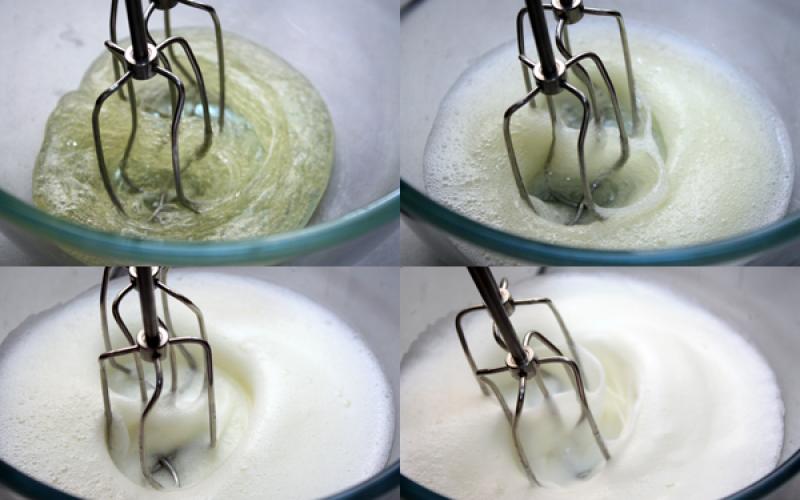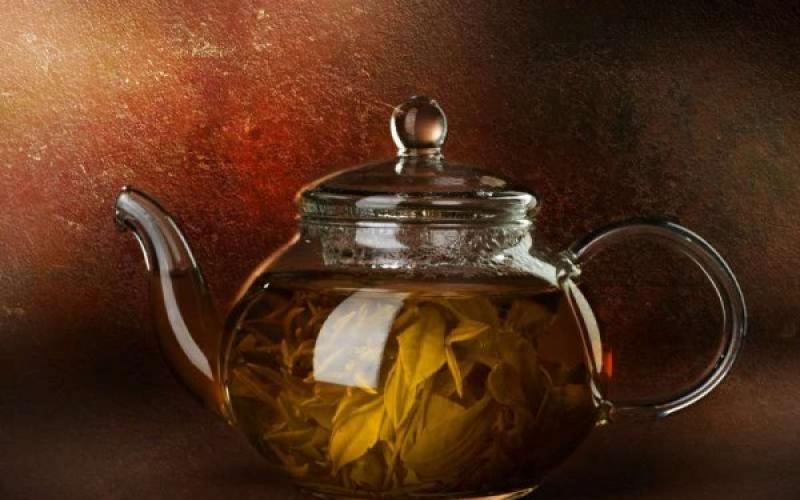Echinacea purpurea (Echinacea purpurea) is a perennial herb from the Asteraceae family, 80-120 cm high. Inflorescences are large, purple-violet baskets.
Depending on the climate, it begins to bloom in late May or early July. Cultivated as an ornamental and medicinal plant.
Its historical homeland is the prairies and sandy banks of the rivers in the east North America, where it has been known to the indigenous inhabitants of the continent since time immemorial.
The echinacea plant is light-loving, winter-hardy, prefers moist fertile soils. Does not require special care. Her vitality is approximately at the level of pharmacy chamomile. The plant blooms in the second year of life. Flowering time up to 75 days.
Echinacea purpurea reproduces well by seed. Grown through seedlings or by sowing in the ground. Stems, flowers, leaves of the plant and rhizomes with roots are used as medicinal raw materials.
Collection and preparation of echinacea
Echinacea flower baskets are harvested in July-August, rhizomes with roots - in late autumn. As a medicine, 3-4-year-old roots are needed. They are dug up in spring or autumn, dried in the shade. When collecting herbs, freshly blossomed plants are harvested and also dried in the shade.
Echinacea herb can be stored for no more than 6 months. Echinacea tincture is stored from 1 to 5 years in a well-closed bottle, in a cold dark place.
The chemical composition and medicinal properties of echinacea
The healing properties of Echinacea purpurea are due to the unique chemical composition all parts of the plant. Echinacea is rich in essential oils, antioxidants, essential organic acids, it contains vitamins A, C and E. In addition to vitamins, there are also trace elements in the leaves, flowers and roots of Echinacea purpurea. These are iron, calcium, selenium, silicon.
This composition of microelements makes it possible for preparations from echinacea to participate in hematopoiesis, the formation of bones, teeth and nail plates, as well as hair. And the microelement selenium today is included in almost all dietary supplements (biologically active additives) as a powerful antioxidant.
Together with vitamins C and E, selenium binds free radicals and removes them from the body. Due to this, early cell aging is prevented, as well as the development of malignant neoplasms.
This vitamin and mineral composition of echinacea purpurea determines its anti-inflammatory, antiallergic, antimicrobial properties. polysaccharides, in large quantities contained in the roots of echinacea purpurea have an immune-stimulating property, activate the production of interferons and help damaged tissues recover faster.
According to scientists, taking preparations made from Echinacea purpurea, on average, increases the number of leukocytes in the blood by fifty percent. Along with this, the activity of the protective properties of the liver increases.
Echinacea purpurea uses
Echinacea is used for mental depression, phenomena of mental and physical overwork, as well as for infectious diseases: typhoid fever, erysipelas, scarlet fever, gonorrhea, osteomyelitis, cerebrospinal meningitis, lupus, and septic conditions.
There are known cases of treatment with echinacea in patients suffering from the discoid form of lupus erythematosus (cutaneous form).
It was found that echinacea tincture is effective for the treatment and especially prevention of respiratory and viral diseases (influenza, herpes simplex, SARS, etc.), with many chronic diseases (rheumatoid arthritis, hepatitis, nephritis, etc.), with adnexitis, cystitis, prostatitis , leukopenia caused by radiation or cystostatics, septic processes, eczema, psoriasis, burns, frostbite, trophic ulcers, purulent deep wounds, carbuncles, and also has a certain effect on oncological processes.
Alcohol tincture of echinacea: take raw chopped root or flowers, pour 70% alcohol in a ratio of 1: 4 and insist 1 month or more. Take 0.5-1 teaspoon 3 times a day, and this tincture can also be used externally, for wet compresses for wounds and burns.
There is another recipe for alcoholic tincture of echinacea, using flowers: cut off the flowers of purple echinacea, place up to the top in a half-liter jar with a twist and pour good vodka, also up to the top.
Close the lid tightly and set aside to infuse in a dark place for 40 days. Then drain everything and you can use it, 15 drops, 20-30 minutes before meals, diluted in a small amount of water or added to tea.
In some patients with chronic gastritis, pancreatitis, psoriasis and allergic rashes on the skin and mucous membranes, a positive effect of raw echinacea root tincture was noted.
Echinacea is used in different types. Tea from it helps with flu, colds, inflammation; after  severe illnesses, antibiotic treatment, operations; in eczema, ulcers and abscesses.
severe illnesses, antibiotic treatment, operations; in eczema, ulcers and abscesses.
Fresh echinacea flowers (3 pcs.) Or raw materials from its crushed roots and leaves (2 tsp) are poured with boiling water (0.5 l) and infused for 40 minutes. For the prevention of diseases, they drink a glass a day, if they are already sick - at least 3 glasses a day, in addition to the main treatment. This tea rejuvenates, slows down aging and cleanses the body.
Echinacea decoction is also drunk for flu and colds, but it has other healing properties: renders therapeutic effect with edema, headache and pain in the joints, stomach ulcers; improves vision, stimulates appetite, normalizes blood pressure; has a tonic and tonic effect.
To prepare it, fresh or dry crushed echinacea leaves (1 tsp) are poured into a glass of water and heated in a water bath for about 30 minutes, then insisted, filtered, and drunk 1/3 cup 3 times a day, before meals.
Echinacea infusion is especially useful in winter: it protects us from colds, strengthens the immune system, relieves fatigue and stimulates physical activity.
Fresh or dry flowers (30 g) are placed in an enamel saucepan, poured with boiling water (0.5 l), closed with a lid and boiled for 10 minutes, and then infused for 4-5 hours in heat to concentrate useful substances reached its maximum. The infusion is filtered, sugar, syrup, honey or berry juice are added to taste; drink 3 times a day, 0.5 cups.
Echinacea purpurea contraindications
Echinacea is contraindicated in patients with autoimmune diseases. Great care should be taken when using medications on the basis of echinacea for people who have serious problems associated with connective tissue disease.
In severe chronic diseases, the use of drugs that contain the echinacea plant requires mandatory consultation with a qualified medical specialist.
The use of the plant should be avoided by patients diagnosed with multiple sclerosis, with a malignant hematopoietic disease (leukemia), with diseases such as tuberculosis, atherosclerosis.
Today, echinacea has become wildly popular among plants. They began to actively grow it in their gardens and dachas. This is due not only to the fact that echinacea is a medicinal crop. It is also a beautiful ornamental and honey plant. However, it is loved most of all because of its medicinal properties.
Therefore, in this article, we would like to take a closer look at practical issues: when, and in what way is it best to harvest echinacea? How to use it?
So, all parts of this amazing plant have medicinal properties - leaves, root, inflorescences. They are rich in biologically active compounds, phenolic substances (among which chicory acid is of particular value), polysaccharides, alkylamides and many other components. It is these substances that provide the bactericidal, immunostimulating, regenerating effect of drugs from echinacea. Probably everyone remembers the burning taste and stiffness (like from lidocaine) of the tongue when you gnaw a piece of a root or a seed. This is the action of alkylamides.
Recent studies have proven that the polysaccharides found in this plant are one of the most beneficial compounds for improving immunity. Thus, echinacea stems also need to be applied, despite the fact that they do not look very presentable. It is in the stems that a large amount of these healing substances accumulate.
When do you start harvesting raw materials? The fact is that echinacea is a perennial plant, so we advise you to use the aerial parts. This can be done successfully for many years in a row. If you need rhizomes with roots, then do not forget to plant new plants in the spring.
To be treated at home, it is not necessary to use echinacea rhizomes and roots. Of these, most often make tincture. For this, fresh and dry raw materials are suitable. Remember that not everyone can use alcohol tincture for medicinal purposes, there is an individual intolerance to alcohol or the drug itself. The tincture is more suitable for treating abrasions and wounds, rubbing the face, gargling, in general, for external use. Also, not everyone is recommended to take a decoction of the roots. Remember that the effect of a decoction of rhizomes and the effect of using herbs is the same. Only you can choose...
Harvest rhizomes in September-October, after the seeds are ripe, or in early spring, before the growing season begins. Dig up the rhizomes, then wash, cut into pieces with a knife, rinse again if necessary, and dry. Here you have to be careful! Dry at a temperature of no more than 40-60 C. If you do not dry the roots, they can be destroyed by mold. When the raw material starts to break down, it means that it is already well dried. Where you are dealing with harvesting rhizomes, do not forget to control that no soft tissue remains. Next, pour the pieces into a jar or cloth bag. Keep roots in the dark.
The aerial part is harvested and used in different dates. From young plants, when a rosette is just formed, you can safely cut off the leaves in early autumn, because they will die off quickly anyway. You can dry it whole, or you can cut it into pieces. But still, it’s better to cut it: it will dry faster, and it will be more convenient to use raw materials.
In the spring, when echinacea is just starting to grow, you can start harvesting it. Do not overdo it, otherwise there will be no flower left later. Most The best way- use young leaves in spring, for example, add to salads. You can mix echinacea with other herbs such as nettle, dandelion, wheat germ, lettuce, etc. Cut all the ingredients, mix, salt and add olive oil. An excellent set of vitamins in one dish!
For tea and medicinal preparations, prepare leaves and inflorescences during the period when the plant is just beginning to bloom, or even shortly before the inflorescences open. At this time they are saturated the largest number biologically active substances. Inflorescences that have faded, it makes no sense to use. After the first collection, in a couple of weeks, inflorescences form again, which can also be harvested, etc. Raw materials are best crushed and dried in a dark place.
How to make healing tea? Take a few leaves or inflorescences of echinacea, pour boiling water over it, leave for 15-20 minutes, and apply. You can take honey and drink it with infusion. Do not dissolve in a drink, namely drink it down.
Echinacea, due to its decorative effect, relation to honey plants and medicinal properties, is of interest to many. Like any plant, this species requires certain rules when collecting.
The Importance of Echinacea
Medicinal value is the whole plant - roots, inflorescences (baskets) and leaves. Echinacea is rich in a lot of useful components, in particular aclilamides, polysaccharides and phenolic substances, including chicory acid.
These biologically active compounds provide bactericidal, anti-inflammatory and immunostimulatory effects of echinacea. Everyone can feel the action of alkylamides by biting into a piece of root or achene - numbness will be felt, as if novocaine was used and a burning taste.
It is a scientific fact that the polysaccharides of this plant are essential components that strengthen the immune system. Useful polysaccharides are concentrated in the stems of echinacea, appearance which you can’t call presentable, but they have a lot of usefulness.
echinacea harvesting
Since this is a perennial plant in which all parts are useful, it is more profitable to use the above-ground part, leaving the underground part for the further development of the plant, which will allow you to "harvest" for several years from one plantation.
If you dig a rhizome with roots, then in the spring you will have to plant a new plant. It is believed that at home it is not advisable to use these parts of echinacea. The rhizome with roots is used to make tinctures, and alcohol forms are not suitable for everyone.
The most suitable way to use the tincture is external use, in particular for gargling or for treating wounds. Of course, on the basis of the roots, you can prepare a decoction, but its qualities are identical to those of a decoction based on the aerial part of Echinacea. Should I dig up the entire plant?
If there is a desire to dig up the roots, then this operation should be started in early spring before the start of the growing season, or in the fall after the seeds have ripened. The dug roots are cleaned of dirt, cut into pieces, again well washed and dried. Important! The drying temperature is 40-60 degrees, which must be maintained without fail. Lack of heat can lead to mold growth. Dry to the state of fragility of the roots.
Rhizomes are checked, they should not have soft tissues left. Dried valuable raw materials are poured into a dry jar or cloth bag. In a dark place, properly dried roots can retain their strength for several years.
The preparation of the above-ground part is carried out at different times. In the first year, leaves are cut from echinacea in the fall, which are dried whole or cut into pieces.
In the spring, you can begin to collect the regrown plant. During work, some plants should be left to bloom. It is ideal to use the harvested young leaves fresh, crumbling them into a salad along with nettle, sprouts, dandelion and season with oil / salt. This dish is full of vitamins.
In the flowering stage (ideally unopened inflorescences), echinacea is harvested for the purpose of making fees and tea. Just during this period in the inflorescences the peak content of biologically active substances. It is pointless to use faded or long-blooming inflorescences.
After the first cut of the inflorescences, in about a month new inflorescences are formed, which can again be collected. The collected material, namely large inflorescences and leaves, is cut and dried in the shade until completely dry. The resulting dried mixture is used in herbal preparations and for the preparation of medicinal teas.
It is easy to make a drink - the inflorescence and a few pieces of leaves are poured with boiling water, after 15 minutes of tincture, the tea is ready for use. It would be nice to drink honey with tea from echinacea (it is not recommended to dissolve it in a drink, it is necessary to use it “in a bite”).
Tea is drunk immediately, because as it is stored, everything evaporates from it. beneficial features. Excessive passion for a dose of echinacea is not welcome, it is enough to brew 1 leaf. It is a proven fact that echinacea is effective in small doses.
Echinacea preparations serve as powerful immunomodulators of natural origin and have practically no negative effects. side effects for good health. Despite the safety for the human body as part of a short course of administration, it is advisable to consult a doctor regarding the possibility of their use, taking into account the existing contraindications.
- Echinosides are rich in roots and flowers, they serve as natural antibiotics, exhibiting properties similar to penicillin, and are able to fight heterogeneous groups of pathogenic microorganisms. These same substances cleanse the human body of free radicals.
- Polysaccharides are found in the aerial parts of the plant. Once inside the body, they envelop cells, protecting them from viral and bacterial aggression, and also help them restore their structure.
- Alkylamides are extracted mainly from the roots, these substances are excellent pain relievers, so they are used as broad-spectrum anesthetics.
- Inulin is found in the root of echinacea, it activates the activity of white blood cells, lymphocytes, due to which they quickly eliminate populations of infectious agents. The immune response strengthened in this way contributes to a quick recovery.
- Plant minerals (iron, potassium, aluminum, magnesium) also play an active role in maintaining immunity. essential oils, flavonoids, chlorogenic acid and synorin, vitamins.
Taking echinacea preparations is indicated to combat staphylococcal and streptococcal infections, tonsillitis, furunculosis, sinusitis. They are effective for the treatment and prevention of colds in the off-season.
Indications for use
Indications for the use of products with echinacea include the following conditions:
- the appearance of boils and rashes on the skin;
- herpes;
- insomnia, increased irritability;
- taking antibiotics;
- high susceptibility to colds;
- long and difficult recovery;
- weakness, lethargy, loss of strength;
- smoking, drinking alcohol;
- unfavorable ecological situation;
- other signs of reduced immunity.
Video: Program "About the most important thing": echinacea for immunity
Forms of release and rules for taking echinacea preparations
There is a wide variety of options for drugs and tonics for immunity based on plant raw materials of echinacea:
- dried parts of the plant are packed in packs of 30 or 100 g;
- ready-made multi-component herbal teas for brewing are most often packaged in filter bags;
- plant juice is offered for use in the form of drops, which must be washed down with water;
- liquid extract in vials of 50-100 ml can be used to make tea;
- tablets with a dosage of 100-200 mg in packs of 20-60 pcs. are produced under various trade names ("Immunorm", "Estifan", "Immunal"), they may also contain vitamins;
- homeopathic remedies are presented in the form of granules;
- solutions for injections ("Echinacea Compositum C" - a drug for intramuscular injection).
An alcohol extract can be used for prophylaxis for 14 days for adults in the amount of 20 drops twice a day shortly before a meal. In cases of severe impairment of immunity, the course of administration is extended to a month, and the amount of the drug is increased to 25 drops.
As part of complex treatment SARS, bacterial infections and influenza, as well as during periods of exacerbation of chronic diseases, echinacea tincture for immunity is consumed three times a day half an hour before a meal, 25 drops. It is especially useful to take the drug immediately, as soon as the first symptoms of a cold appear, and up to 2 days after their complete disappearance.

Echinacea use in children
The child's body is extremely susceptible to colds. The emerging immunity cannot cope with the abundance of pathogenic microbes that are constantly present in kindergartens and schools, which can cause frequent recurrent acute respiratory viral infections, an increase in the duration of the recovery period, and the occurrence of complications.
Alcohol extracts of echinacea under 12 years of age cannot be used; for babies, there are special syrups, lozenges, granules, tablets or emulsions. Can be done at home water extract, brewing vegetable raw materials like regular tea.
From the age of 12, an alcoholic tincture of echinacea is used to increase the immunity of a child, diluted with water in a ratio of 1 to 3, and allowed to drink 5-10 drops of the resulting remedy three times a day before meals. Tea from vegetable raw materials can be taken by children from 3 years old 3 times a day for 50 ml, the course should not exceed 5 weeks. It can be consumed in its pure form or added to juices and compotes.
A warning: Echinacea pharmaceutical dosage or prescription home cooking drugs from it for children must be agreed with the local pediatrician.

Recipes for self-preparation of medicinal products
Echinacea tincture is available from pharmacies without a prescription and is also easy to make at home. You can grow echinacea in your backyard. Medicinal raw materials are prepared by collecting grass during flowering, rhizomes are dug up in the fall. It is permissible to dry the aerial parts in a natural way, cutting into pieces. The roots are pre-washed and dried at a temperature of 40-60 ° C until brittle, otherwise they may be damaged by mold.
Important: AT traditional medicine It is customary to use plants for medicinal purposes that are at least 2 years old.
Recipe for homemade tincture of echinacea leaves
Compound:
Fresh echinacea leaves - 200 g (or dried herbal raw materials in the amount of 50 g)
Vodka - 500 g
Application:
The leaves of the plant are put into a bottle and poured with vodka, then the dishes are placed in darkness and coolness for 10-12 days. The composition must be shaken daily.
Recipe for homemade tincture of echinacea rhizomes
Compound:
Echinacea root - 100 g
Vodka (alcohol) - 0.5 l
Application:
Plant materials must be washed well, cleaned and placed in a glass dish with vodka or alcohol. The infusion requires daily shaking. Cooking takes 10-12 days in a dark cool place.

echinacea decoction recipe
Compound:
Chopped Echinacea herb - 1 tsp
Water - 1 glass
Application:
Pour vegetable raw materials into boiling water, simmer the mixture in a water bath for about a quarter of an hour, then remove for 30 minutes to infuse and strain the liquid. The drink is consumed in a third of a glass three times a day before meals for 10 days, then you need to take a break for 5 days and repeat the course if necessary.
echinacea water infusion recipe
Compound:
Echinacea leaves and flowers - 1 tsp.
Water - 200 g
Application:
Pour boiling water over the plant, brew for several minutes under the lid. It is useful to add honey to taste in the cooled and infused liquid. The drink can be taken up to 3 times a day during a meal for a week and a half, after which it is necessary to take a break of at least 10 days.
Contraindications
Echinacea preparations should not be taken in acute leukemia, the presence of malignant neoplasms, viral immunodeficiency, diabetes, individual intolerance and allergies, tuberculosis and systemic lupus erythematosus. Constant and regular intake of funds based on this plant can contribute to disruption of the functioning of the gastrointestinal tract and an increase in the excitability of nervous activity.

It can also be toxic to the liver if used long term. It should be excluded joint intake of echinacea tinctures with other drugs that have a detrimental effect on the health of this organ. These include:
- amiodarone;
- anabolic steroid;
- methotrexate;
- ketoconazole.
The intake of immunosuppressants (cyclosporine, corticosteroids), the recovery period after organ transplantation are also contraindications to treatment with echinacea tincture to stimulate immunity, since in this case there is a risk of exacerbation of the disease and the development of autoimmune processes.
The use of drugs during pregnancy and breastfeeding is controversial in the medical environment, so the decision on the possibility of their use should be entrusted to a specialist. Alcohol tinctures parts of the plant during this period are prohibited for use.
Video: How to Harvest Echinacea
Echinacea is a herbaceous plant with beautiful purple flowers. They bloom at the end of May and delight the eye almost all summer.
The plant has useful properties, therefore it is used not only in decorative purposes but also in medicines. Echinacea tinctures and teas can strengthen the immune system, help the body fight viruses.
Features of collecting echinacea
Echinacea belongs to perennials. Its life expectancy is approximately six years. During this period, you can successfully collect and store the ground part of the plant. It is necessary to start harvesting medicinal raw materials:
- in the second year of life of echinacea;
- during the first half of mass flowering - in July.
The leaves of the plant can be used immediately - add to the salad along with dandelion, nettle. Just do not cut them off too intensively, because the plant needs to develop further.
It should also be taken into account that:
- The most valuable is the raw material collected during the period when the echinacea is just beginning to bloom, and its buds have not yet fully opened. During this period of time, the plant is maximally filled with active substances.
- It is not recommended to collect the echinacea that has been blooming for a long time or has already faded.
- After the first collection, you need to wait 3-4 weeks and start harvesting newly blooming inflorescences.
How to harvest echinacea
The collection of echinacea is done as follows:
- Cut flowering shoots 25-35 cm long.
- Leaves and large inflorescences are additionally crushed.
- Lay out under a canopy to dry. Raw materials should be constantly in the shade until completely dry.
When the echinacea reaches the desired state, the leaves and inflorescences should be mixed and poured into a paper box or cloth bag.
The collected echinacea is also dried in small bunches. They are hung on a rope with inflorescences down. This type of drying ensures high-quality drying of the plant.
Echinacea inflorescences can be harvested separately from the leaves:
- Buds and only blossoming flowers are cut with secateurs.
- Lay out on a smooth surface and dry.
- Grind with a coffee grinder.
- Pour into a sealed container.
Echinacea has been successfully used in teas and herbs. It is enough to take a few dried leaves and an inflorescence, or a teaspoon of flower powder, pour boiling water and leave for about ten minutes. Then put a spoonful of honey in your mouth and drink medicinal tea. You can also dissolve honey in a drink. But it's better to drink.
Collection of rhizomes and roots of echinacea
The autumn period is favorable for harvesting roots and rhizomes. In September-October, the volume of medicinal substances in the underground part of echinacea reaches its highest level.
Excavated raw material:
- Shake off and clean from the ground.
- Washed in cool water.
- Hanging in the open air.
- Cut into small pieces.
- Dry in a room with excellent ventilation or in an oven (40-45 degrees).
- Put in a glass jar so that there is a significant space between the pieces of echinacea roots. Ramming raw materials is not allowed.
Drying is the most important part of harvesting a plant. You need to constantly monitor that the roots are not covered with mold. When they can be easily broken, this means that the drying is over. Each piece should be reviewed and made sure that there are no underdried areas. Otherwise, the roots will be stored poorly.








